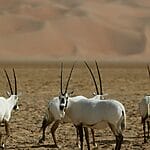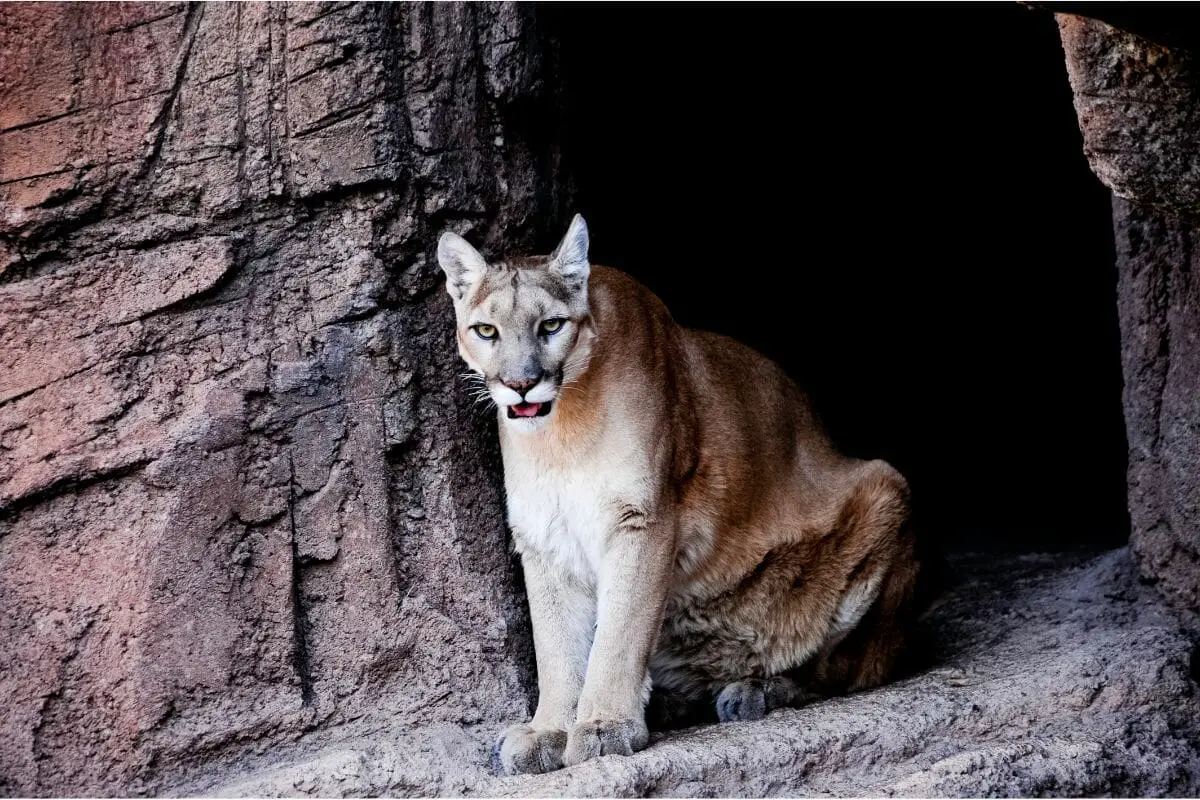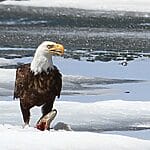10 Interesting Animals in the Serengeti – You Might Not Know
The Serengeti in Tanzania, and east Africa, is renowned for its diversity of interesting animals in the Serengeti. The landscape of grasslands and woodlands is home to an incredible array of wildlife, from large mammals to small birds and insects.
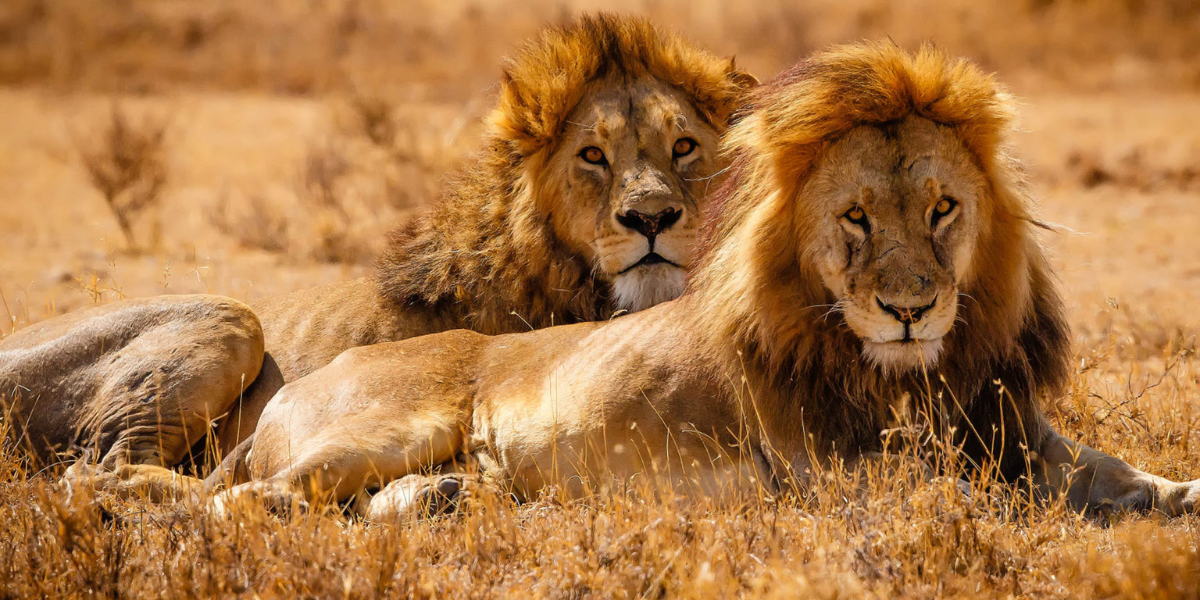
Some of the most interesting animals in the Serengeti include the “Big Five” – lions, leopards, elephants, buffalos, and rhinos. Additionally, the Serengeti also boasts wildebeests, zebras, hippos, crocodiles, giraffes, gazelles, monkeys, hyenas, jackals, and over 500 avian species.
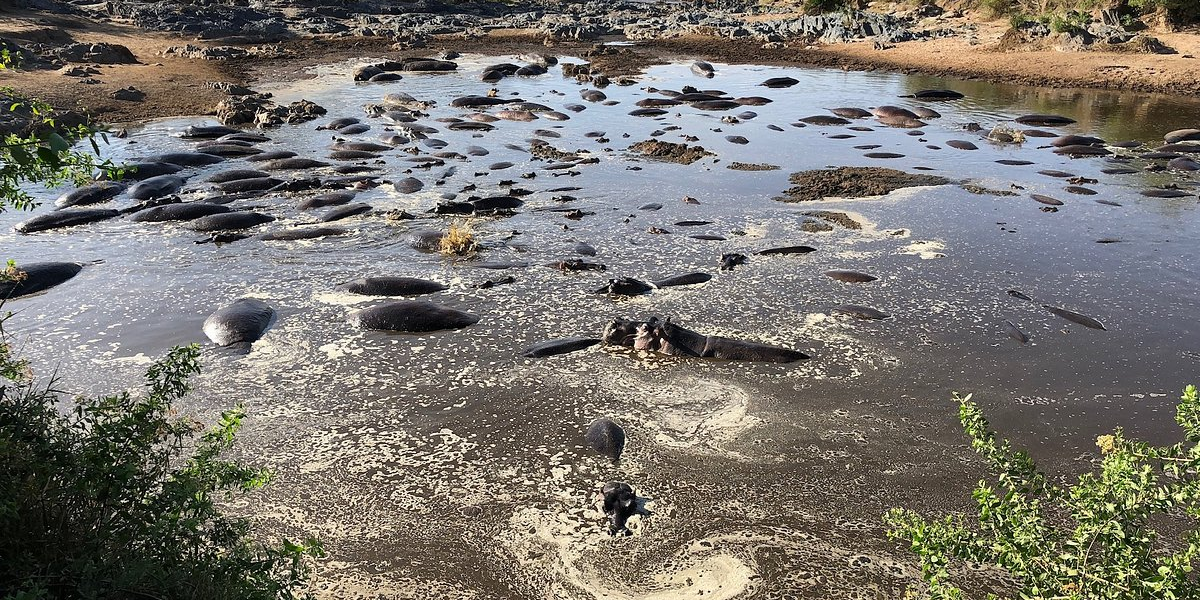
Researchers continue studying the intriguing behaviors of wild animals in the Serengeti while conservation efforts aim to protect the invaluable ecosystem. So future generations can enjoy glimpsing magnificent and interesting animals thriving in the Serengeti.
Where to Look for the 10 Most Interesting Animals in the Serengeti? – (With Interesting Pictures)
The Serengeti region in Tanzania is most famous for its annual migration of wildebeest and zebra, but the landscape is home to many other interesting animal species well adapted to their habitats in the Serengeti’s national parks. Moreover, we have gathered 10 interesting animals in Serengeti and the best spots to find them.
Serengeti National Park
Tanzania’s Serengeti National Park is an iconic African safari destination, renowned for its fascinating wildlife including the annual migration of over 1.5 million wildebeests.
This UNESCO World Heritage Site protects a landscape of endless grassland plains, savanna, woodlands, and river systems, providing critical habitats for an incredible diversity of interesting animals in the Serengeti.
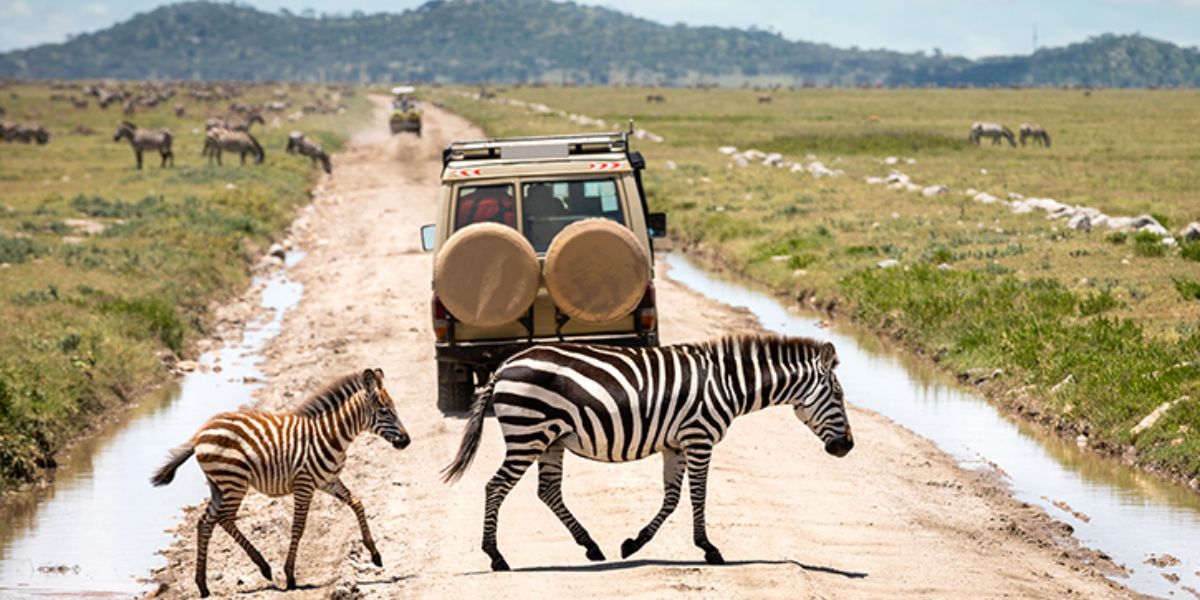
Cheetahs, leopards, lions with magnificent black manes, elephants, giraffes, and over 500 bird species also thrive amongst the landscapes that support Earth’s last great wildlife sanctuaries.
Moreover, visitors can spot elephants wandering acacia woodlands, gazelles grazing the golden plains, giraffes foraging the treetops, and colorful birds dotting the skies.
Serengeti Mara Ecosystem (Another Best Place to Spot African Wild life)
The Serengeti-Mara Ecosystem, a vast and awe-inspiring expanse, stretches across the Serengeti National Park in Tanzania and the Maasai Mara National Reserve in Kenya.
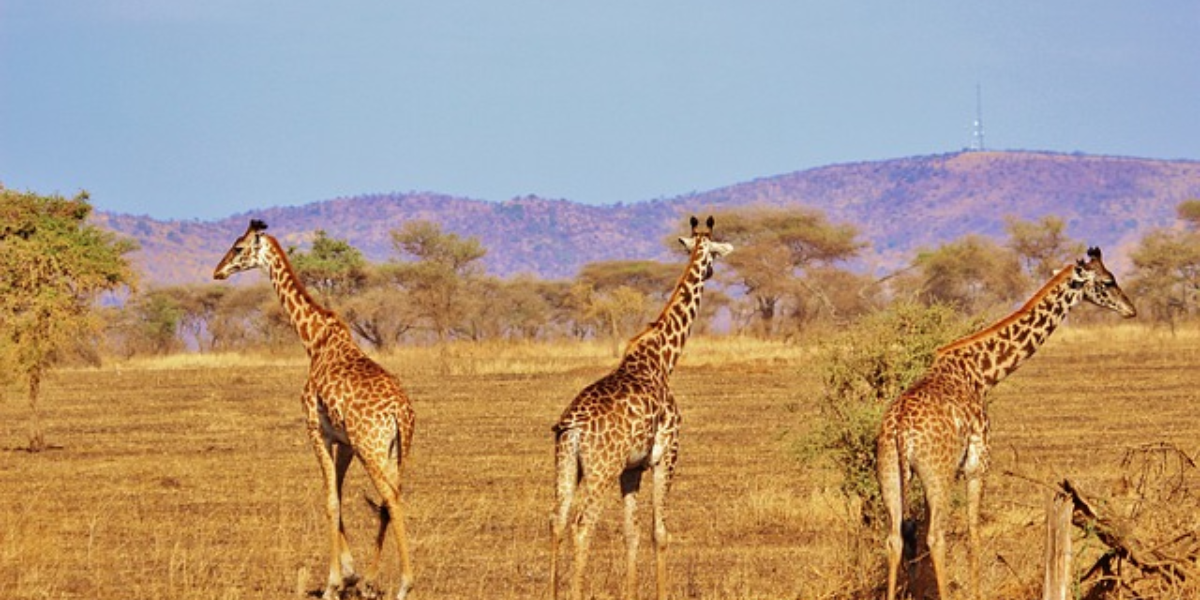
Renowned for hosting one of the greatest wildlife spectacles on Earth, the annual migration of wildebeest and other herbivores, this ecosystem is a UNESCO World Heritage Site.
The Serengeti-Mara Ecosystem is characterized by its diverse landscapes, including vast grasslands, riverine forests, and acacia woodlands, providing a habitat for an impressive array of wildlife.
The Serengeti National Park in Tanzania and the Maasai Mara National Reserve in Kenya are key components of this ecosystem.
Lion (Panthera leo) – King of African Savannah
Lions are one of the most interesting animals in Serengeti and are also known as the lion king of the African Savannah. Their natural habitats across sub-Saharan Africa include savannas, open woodlands, scrub, and grassy plains where prey like zebras and wildebeests dwell.
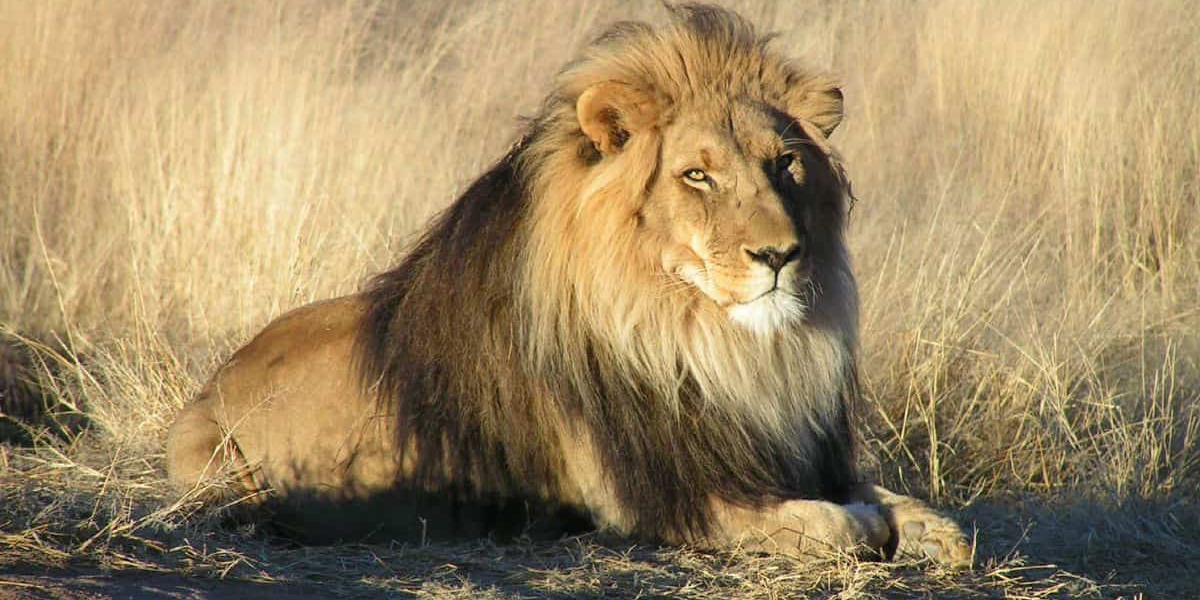
Moreover, you can spot Serengeti lions along the Grumeti River during the late dry season from June to early July. This is when over 1.5 million wildebeests and zebras swim the crocodile-infested river as part of the Great Migration, providing hunting opportunities for patient lions.
Additionally, there are over 3,000 wild lions left in Africa. The decline of natural grassland habitats and diminishing prey are the biggest threats to their population.
Hippopotamus (Hippopotamus amphibius) – Largest Land Mammal
Despite their immense size and stocky appearance, hippos are swift runners and aggressive fighters, making them among the most dangerous and interesting animals in the Serengeti. Hippo habitats include rivers, lakes, and swampy areas.
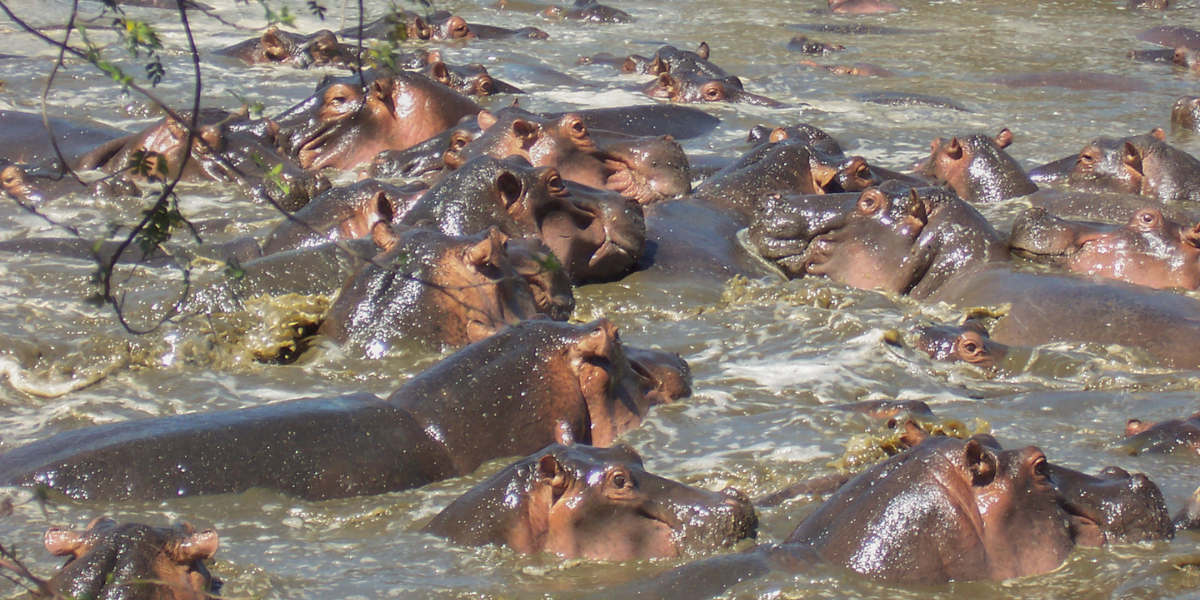
They spend days cooling off in the water where their eyes, ears and nostrils peak out slyly, yet they emerge at night to graze grasslands. A prime spot to safely see hippos in Serengeti National Park is along the Grumeti River in the Western Corridor.
Hundreds lounge in pools while yawning widely with large tusks exposed as migratory wildebeest herds cross. While hippos remain common across sub-Saharan Africa, loss of freshwater habitats has increased confrontation and vulnerability.
As water resources shrink, hippos more frequently encounter fishermen, cattle herders and rural farmers, sparking fatal attacks in localized areas. On the red list of threatened species they are categorized as “Vulnerable”, with an estimated population of 115,000 to 130,000.
Protecting fragile river ecosystems help and ensures the survival of these deceivingly interesting animals in the Serengeti.
African Wild Dog (Lycaon pictus)
African wild dogs are uniquely fascinating predators, with oversized rounded ears are one of the interesting animals in Serengeti. These long-legged, energetic canids prefer to live in savanna woodlands and grassland plains teeming with fleet-footed antelope, ideal terrain for their exhaustive group hunts.
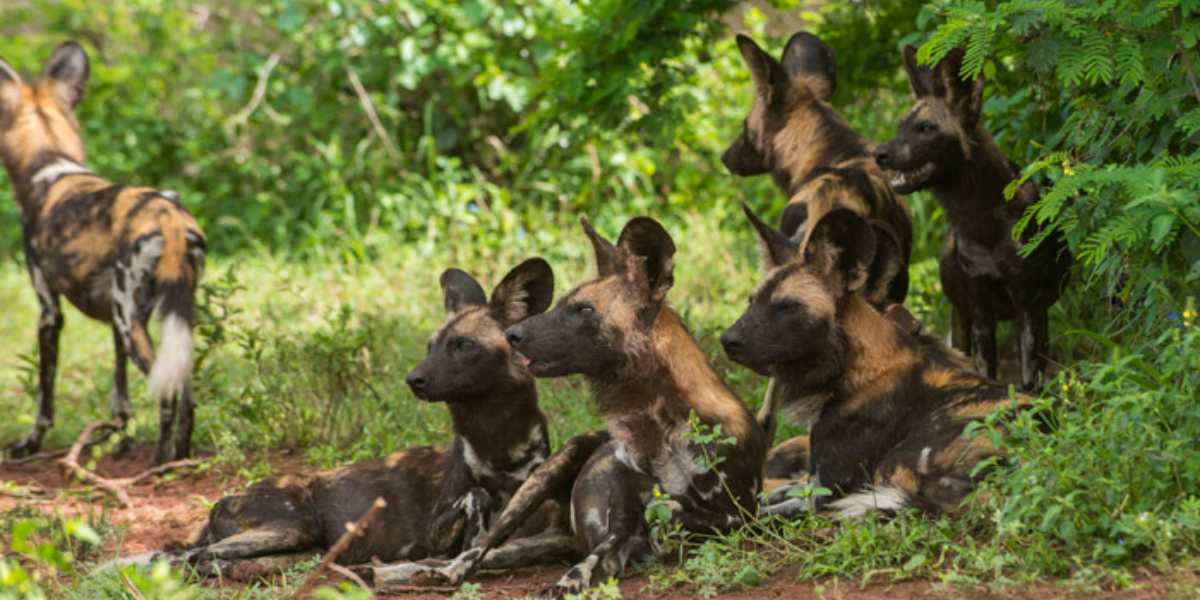
One of the best spot to observe their dynamic packs within Serengeti National Park is the open grasslands of the Seronera Valley, especially during April pup-rearing season.
These interesting animals in the Serengeti are categorized as “Endangered species” by the IUCN, only about 6,600 African wild dogs remain across Africa due to widespread habitat loss, prey depletion from human over-hunting, and disease transmitted from domestic dogs.
African Elephant (Loxodonta)
African elephants, revered as fascinating and intelligent creatures, predominantly inhabit the diverse landscapes of the Serengeti National Park in Tanzania. Their natural habitat within the park ranges from savannas and grasslands to woodlands and riverine forests.
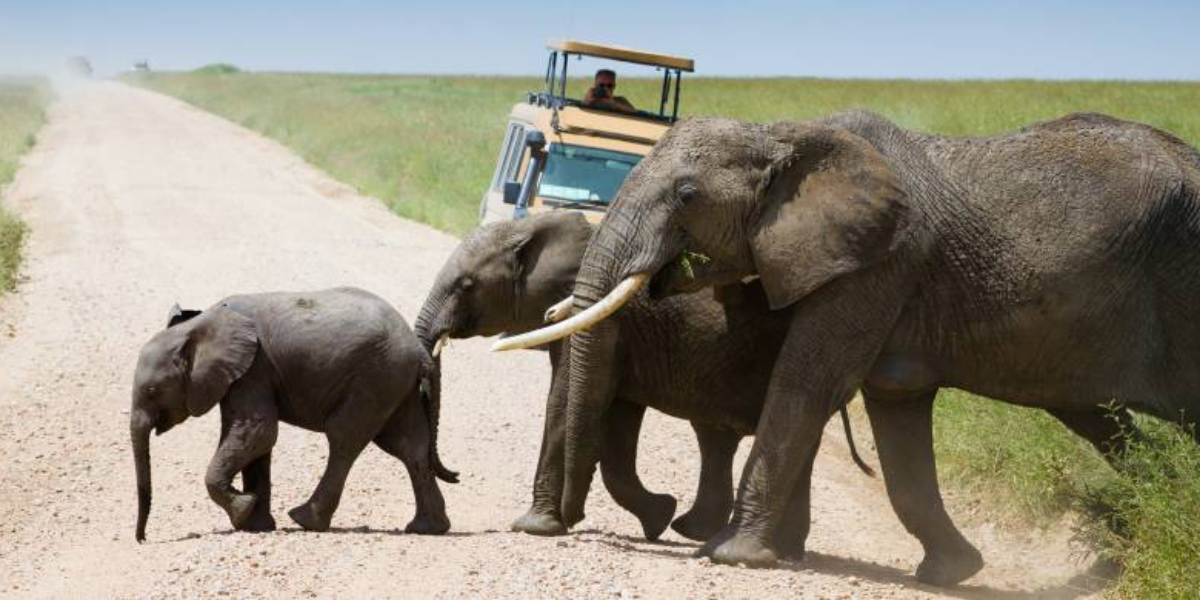
The best spot to encounter these interesting animals is often the Seronera region, characterized by its rich vegetation and year-round water sources, attracting a high concentration of wildlife, including African elephants.
On the International Union for Conservation of Nature (IUCN) African elephants are listed as “Vulnerable Species.” Preserving their habitats and implementing effective conservation measures are necessary to ensure long-term survival.
Olive Baboons (Papio anubis)
Olive Baboons (Papio anubis) are fascinating primates that inhabit diverse environments across Africa, including grasslands, savannas, and forests. In the Serengeti National Park, Tanzania, these interesting animals thrive in the park’s open grasslands, showcasing their adaptability to various habitats.
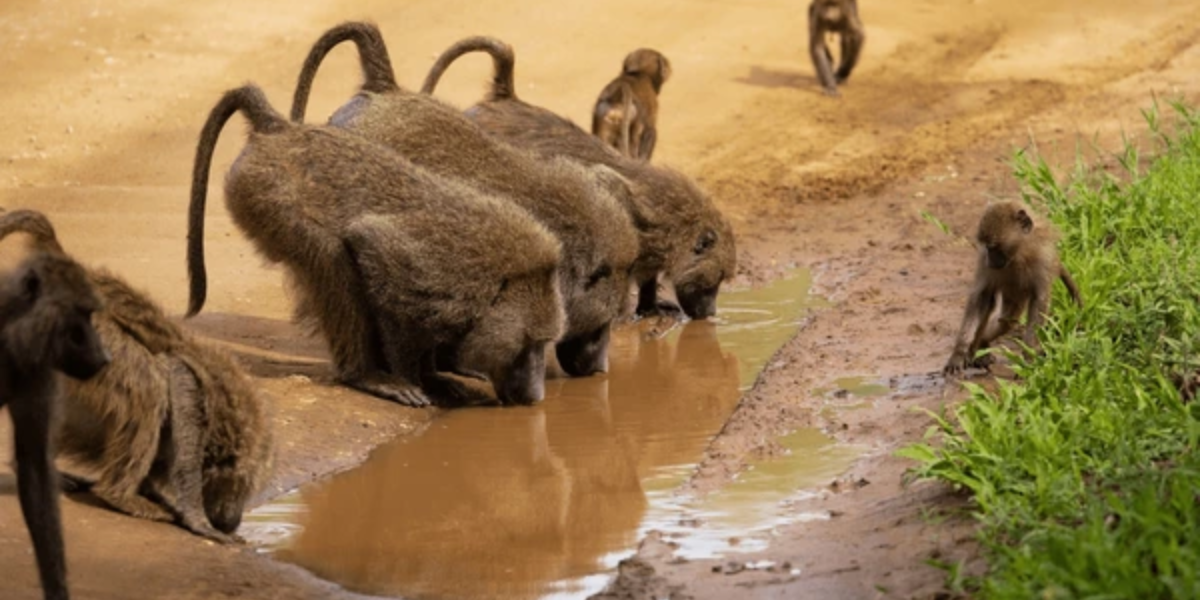
Also renowned for hosting one of the greatest wildlife spectacles on Earth, the annual migration of wildebeest and other herbivores, this ecosystem is a UNESCO World Heritage Site.
The Serengeti-Mara Ecosystem is characterized by its diverse landscapes, including vast grasslands, riverine forests, and acacia woodlands, providing a habitat for an impressive array of wildlife.
The Serengeti National Park in Tanzania and the Maasai Mara National Reserve in Kenya are key components of this ecosystem.
Ngorongoro Crater
Ngorongoro Crater, often referred to as Africa’s “Garden of Eden,” is a geological marvel nestled within the Ngorongoro Conservation Area in Tanzania. Formed by the collapse of a massive volcano millions of years ago, the crater spans over 260 square kilometers and is home to a unique and diverse ecosystem.
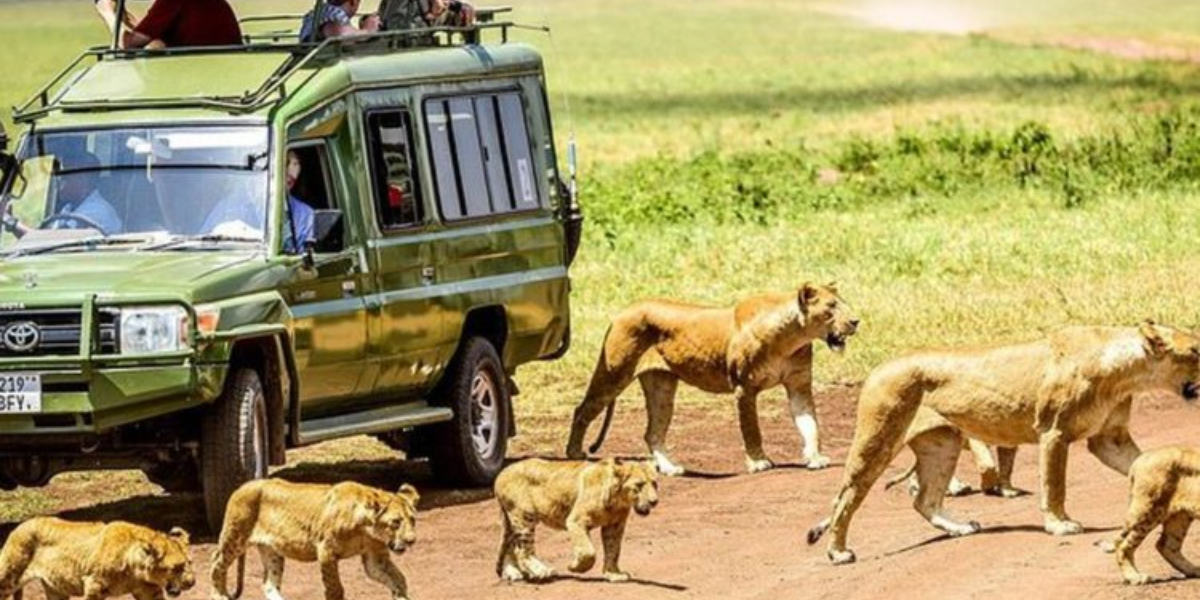
The crater’s lush landscapes include grassy plains, acacia forests, and a central soda lake, attracting an abundance of wildlife. Visitors to Ngorongoro Crater can witness the some most interesting animals such as lion, elephant, buffalo, leopard, and rhinoceros – along with a myriad of other species, including zebras, wildebeests, and flamingos.
The area’s conservation efforts have earned it UNESCO World Heritage status, preserving the delicate balance of flora and fauna.
Black Rhino (Diceros bicornis)
The Black Rhino (Diceros bicornis) is a fascinating and critically endangered species known for its solitary nature and distinctive hooked upper lip. These are interesting animals in the Serengeti are herbivores and primarily inhabit savannas, grasslands, and dense forests across Africa.
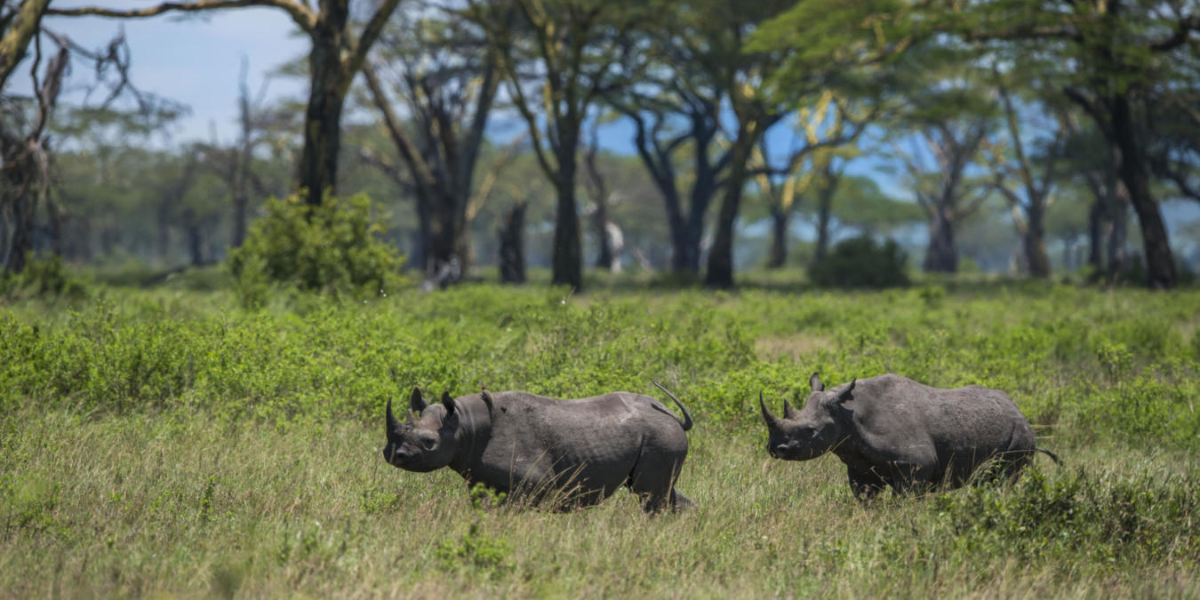
Within the Serengeti National Park, a UNESCO World Heritage Site in Tanzania, the best spot to encounter these interesting animals is the Moru Kopjes region. Here, the rocky outcrops provide an ideal mix of vegetation and water sources, attracting Black Rhinos in search of sustenance.
Unfortunately, the Black Rhinos are facing some major threats such as poaching and habitat loss. As per the International Union for Conservation of Nature (IUCN), the Black Rhino is classified as “Critically Endangered.”
Other Interesting and Dangerous Animals in the Serengeti
Serengeti is also known for many interesting and dangerous animals. You can spot big cats, with lions and cheetahs dominating the grassy expanses. While these predators are fascinating to observe, their predatory nature makes them potentially dangerous.
Moreover, the Nile Crocodile, a formidable aquatic resident of the Serengeti’s waterways, adds an element of danger. Stealthy and powerful, these reptiles are known for their ambush tactics.
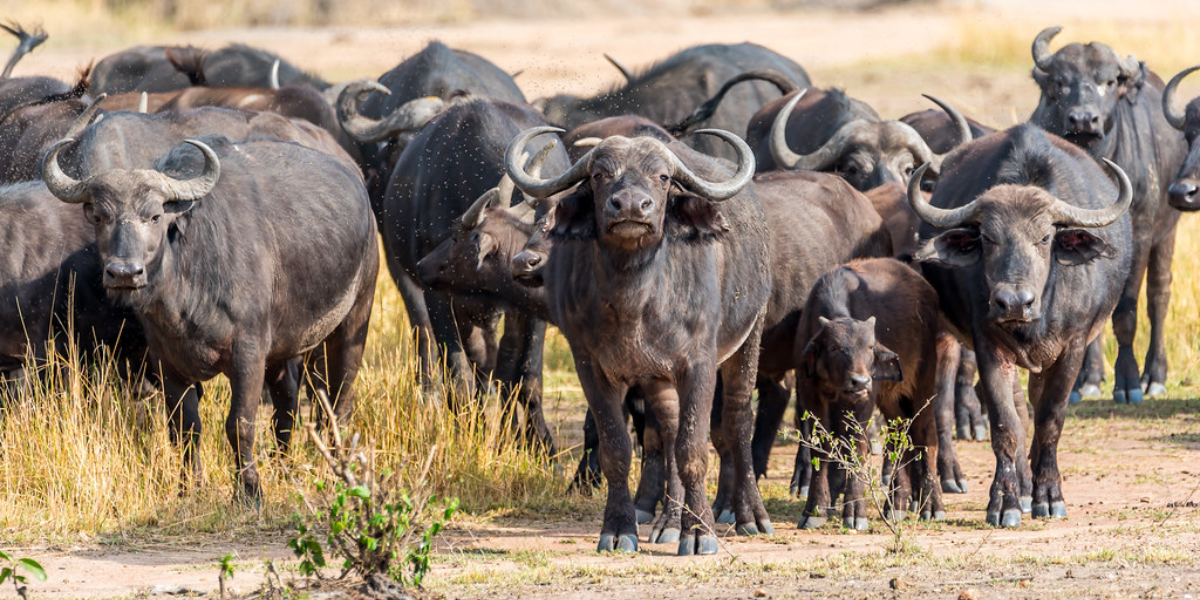
Additionally, the Cape Buffalo, labeled as one of the “Big Five” game animals, is notorious for its unpredictable and aggressive behavior, making encounters potentially perilous. However, there are many other interesting and dangerous animals, we have listed some of them below.
Tigers (Panthera tigris) – Big Cats
Tigers are magnificent big cats known for their striking orange coats and distinctive black stripes. These interesting animals in the Serengeti inhabit a variety of ecosystems across Asia, from dense forests to grasslands.
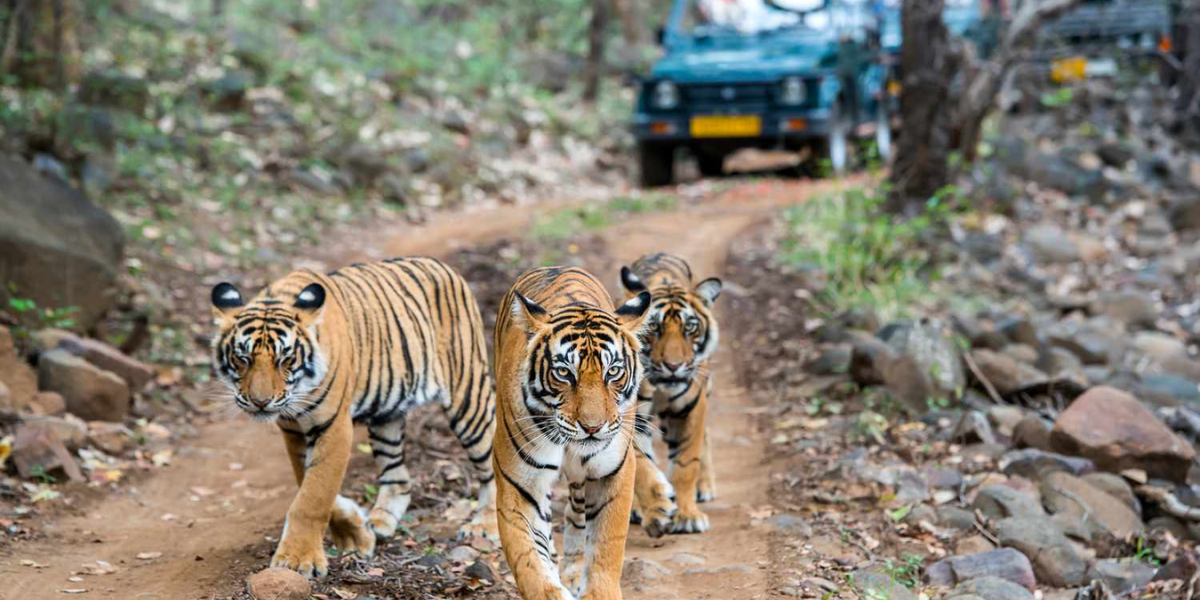
However, their natural habitats are rapidly diminishing due to human encroachment and deforestation. Serengeti National Park in Tanzania stands out as an intriguing location to spot these fascinating creatures in the wild.
Although not native to Africa, a small population of tigers resides there, making it an unexpected yet thrilling encounter. The park’s diverse landscapes and abundant prey provide an interesting environment for these big cats.
Unfortunately, globally, tigers face the threat of extinction, with the International Union for Conservation of Nature (IUCN) listing them as “Endangered Species.”
Cape Buffalo (Syncerus caffer)
Cape Buffaloes, scientifically named Syncerus caffer, are robust herbivores native to sub-Saharan Africa. These formidable animals are often referred to as one of the “Big Five” due to their impressive size, strength, and unpredictable nature.
These buffaloes can be recognized by their distinctive curved horns that form a formidable helmet, Cape Buffaloes exhibit a social structure with strong bonds among herd members.
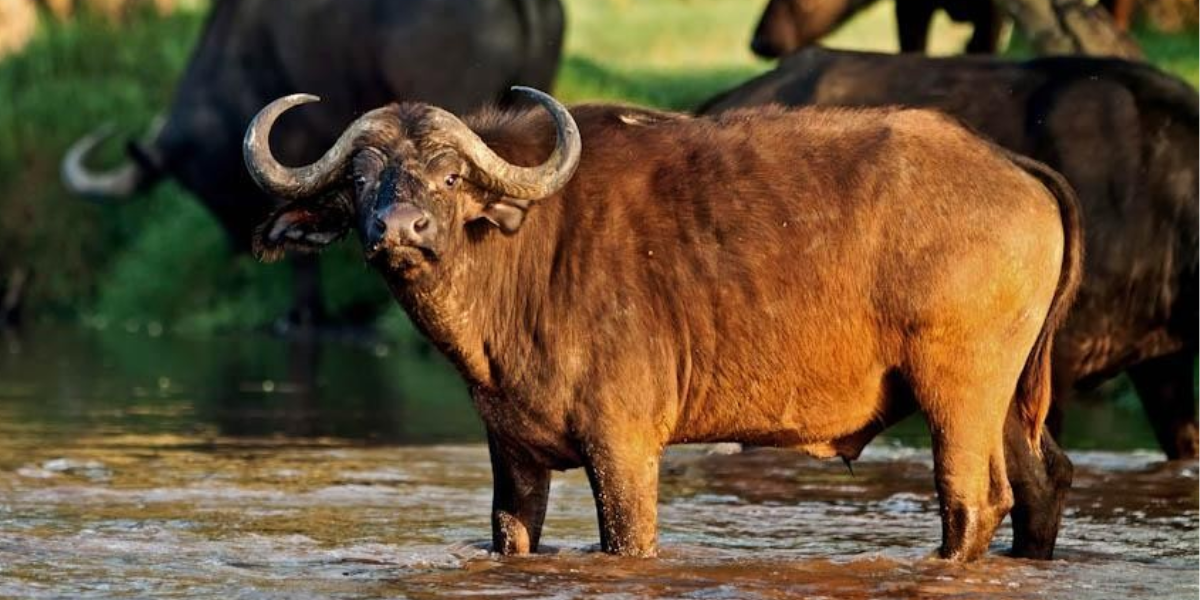
They thrive in a variety of habitats, including grasslands, savannas, forests, and swamps, showcasing their adaptability to different environments. Despite their seemingly tough exterior, Cape Buffaloes are known for their herbivorous diet, primarily consisting of grasses.
Serengeti National Park, located in Tanzania, stands out as an ideal spot to observe these interesting animals in their natural environment.
Despite their impressive stature, Cape Buffaloes are listed as “Least Concern” on the International Union for Conservation of Nature (IUCN) Red List, reflecting a relatively stable population.
Banded Mongoose (Mungos mungo)
The Banded Mongoose (Mungos mungo) is an interesting animal native to sub-Saharan Africa, known for its distinctive behavior and social structure. These small carnivores thrive in a variety of habitats, ranging from woodlands to grasslands, and are often found in close proximity to water sources.
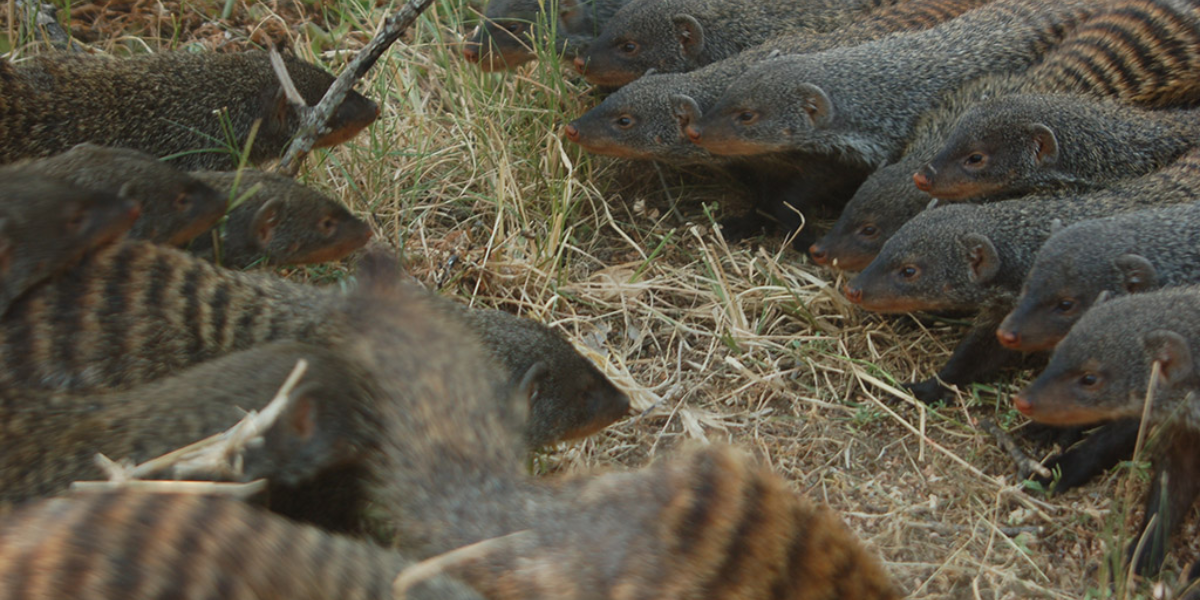
In the Serengeti National Park, one of the best spots to encounter Banded Mongooses is the savannah region, where they form tight-knit groups called troops
These troops, consisting of 20 to 40 individuals, engage in cooperative activities such as foraging and predator defense. While exploring the vast plains of the Serengeti, visitors may witness their playful interactions and efficient foraging techniques.
Despite their adaptability, they are suffering from some threats such as habitat loss, and human-wildlife conflict. Currently listed as a species of “Least Concern” on the International Union for Conservation of Nature (IUCN) Red List.
Grant’s Gazelle (Nanger granti)
Grant’s Gazelle (Nanger granti) is an interesting animal native to the grasslands and savannas of East Africa, particularly found in Tanzania and Kenya. These graceful herbivores inhabit a variety of ecosystems, ranging from open plains to acacia woodlands.
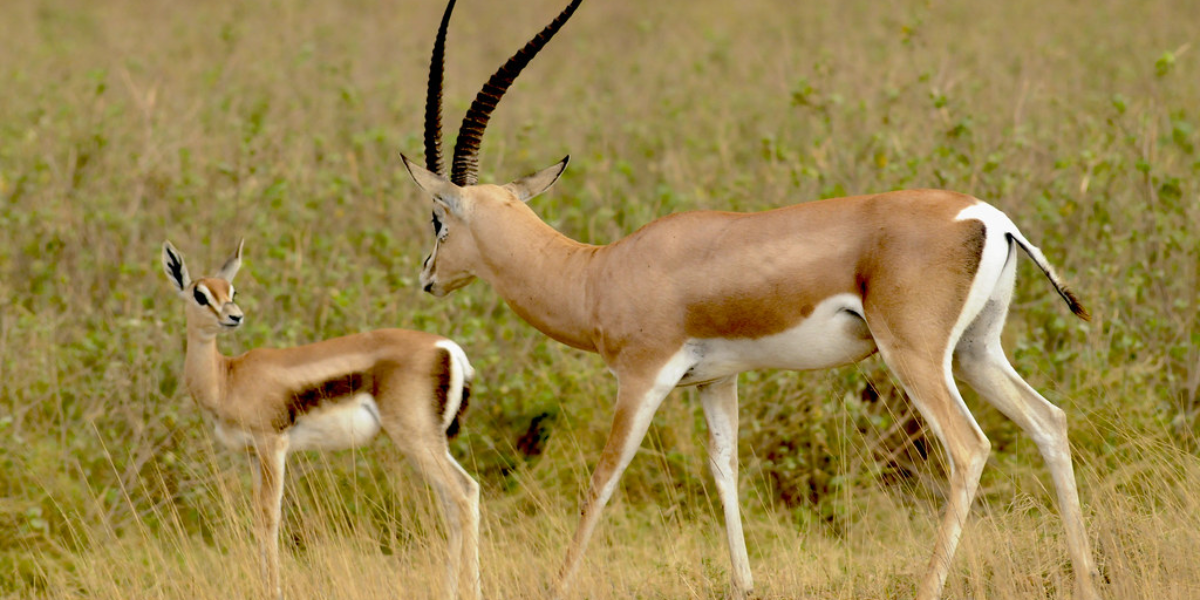
Serengeti National Park, renowned for its rich biodiversity, is a prime location to spot Grant’s Gazelles. The park’s expansive plains provide an ideal setting for these slender and fast antelopes, making it an optimal spot for wildlife enthusiasts and photographers.
Although they have adapted to various environments, these gazelles are most commonly found in areas with a mix of open grassland and scattered bushes.
Their populations face challenges due to habitat loss and predation. Moreover, the Grant’s Gazelle is currently classified as of “Least Concern” species on the IUCN Red List.
Frequently Asked Questions about Interesting Animals in the Serengeti
What are the big 5 animals in the Serengeti?
The Big Five animals in the Serengeti are African Elephant, Lion, African Buffalo, Leopard, and Rhinoceros.
What is the main animal of Serengeti?
Wildebeests are the main and dominating wild animals in Serengeti National Park.
What is unique about Serengeti?
The Serengeti is unique for several reasons, which includes Great Migration, Abundance of Wildlife, Grassy Plains, Cultural Heritage, and Paleontological Significance.
What is the top predator in the Serengeti?
Lions are the top predators in the Serengeti.
- 12 Interesting Animals in Dominican Republic - 2024-05-02
- 8 Common Dangerous Animals in Yosemite - 2024-05-01
- 11 Interesting Animals in the Midwest - 2024-05-01





